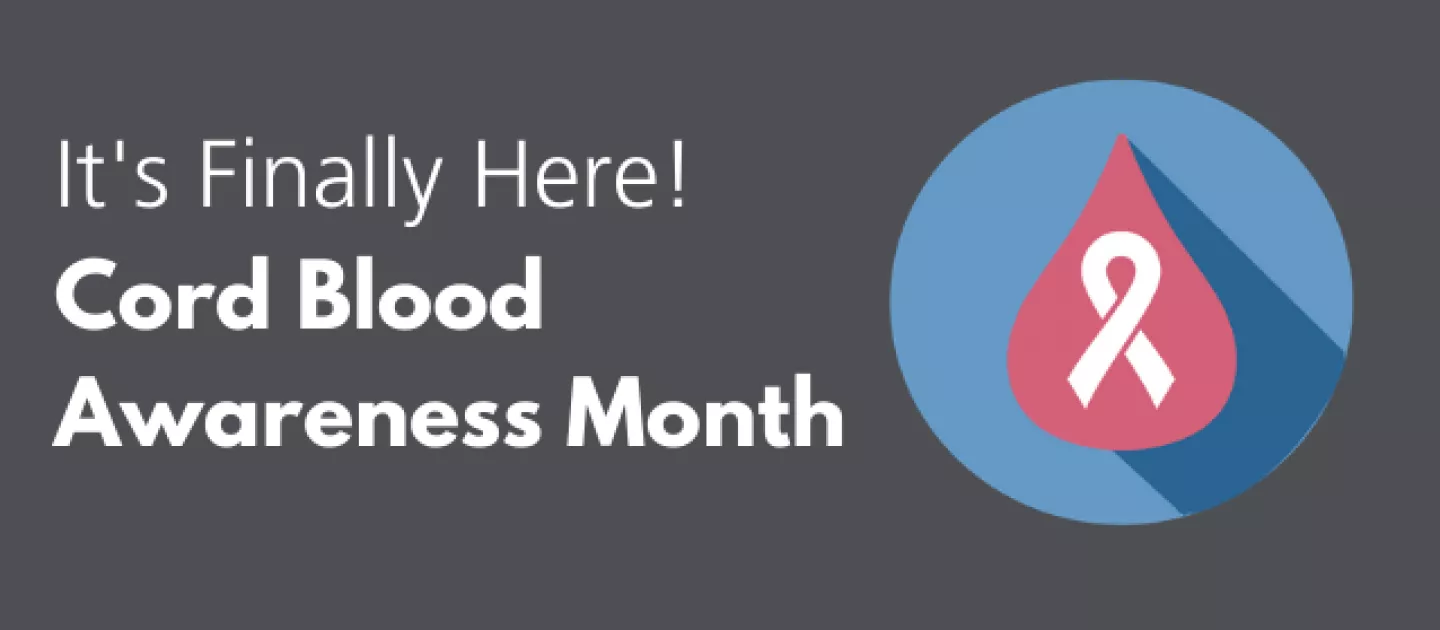Awareness months, weeks, and days have become a part of our yearly calendars – for all good reasons. Coming together to help spread awareness, knowledge and show support for important topics can be a powerful tool. July is home to many important awareness causes, but there is one that is near and dear to us here at ViaCord - Cord Blood Awareness! We love sharing knowledge about cord blood all year long, but this month we’re ramping it up and hope you’ll join us for the ride.
Why Does Cord Blood Deserve an Awareness Month?
According to the Centers for Disease Control (CDC) there are about 4 Million Births in the U.S. each year. That’s a lot of diapers! For the millions of births, cord blood is collected only ~ 5-10% of the time. Cord blood contains valuable stem cells with a history of proven use in medicine to help heal the body and save lives.
It's an important resource that should be saved. . .and not discarded as medical waste. Creating awareness for cord blood’s value and expecting families’ options to bank (private or public) is our focus for Cord Blood Awareness Month.
Let’s start from the beginning.
Stem cells were first discovered in umbilical cord blood in 1974.1 Stem cells are unique cells with the ability to copy themselves (renew) and turn into different types of cells (differentiate) in the body. A pretty exciting discovery!
Less than a decade later, Dr. Hal Broxmeyer (aka the Grandfather of cord blood) and his colleagues first proposed using umbilical cord blood to secure a type of stem cell used in transplant medicine known as Hematopoietic Stem Cells (HSCs). 2 At that time bone marrow was the standard source of HSCs for transplants.
In 1988, five years after Dr. Broxmeyer’s proposal to use HSCs found in cord blood, the first successful transplant was performed on a six-year-old boy suffering from the blood disorder “Fanconi’s Anemia.” 2 And that was the birth, no pun intended, of cord blood use in medicine.
Curious to know how that little boy is doing today? Spoiler alert! He’s a healthy adult, living life to the fullest. Read an interview with him on Parent’s Guide to Cord Blood.
Recognizing Cord Blood’s Value
Since the first transplant in 1988, researchers and scientists have worked tirelessly searching for possible new uses for cord blood.Why? The umbilical cord provides an easy and non-invasive way to secure valuable stem cells, unlike securing stem cells from bone marrow, which is an invasive and painful procedure. 3 Additionally, advantages of umbilical cord stem cells over bone marrow stem cells have been discovered over the years. We’ll get into that in a later blog post.
Currently, cord blood can be used in the treatment of nearly 80 life-threatening conditions, including certain cancers, blood disorders, immunodeficiencies, bone marrow disorders, and more.4 More recently, use has expanded beyond transplant medicine into an area known as regenerative medicine.
The Bottom Line
So, what’s the bottom line? The bottom line is that cord blood has been helping families live healthier lives for the last thirty years and will continue to do so for many years to come. That’s why it's so important to help raise awareness about what it is, what it can do, and what expecting families’ options are when it comes to banking. Stay tuned throughout the month to learn more about all things cord blood.
Be sure to follow us on Facebook and Twitter to get all of our latest updates!
Disclaimer: Banking cord blood does not guarantee that treatment will work and only a doctor can determine when it can be used. Cord tissue stem cells are not approved for use in treatment, but research is ongoing.
References:
- Centers for Disease Control https://www.cdc.gov/nchs/nvss/births.htm
- Broxmeyer HE, Douglas GW, Hangoc G, et al. Human umbilical cord blood as a potential source of transplantable hematopoietic stem/progenitor cells. Proc Natl Acad Sci U S A. 1989;86(10):3828-3832. doi:10.1073/pnas.86.10.3828 https://pubmed.ncbi.nlm.nih.gov/2566997/
- Malgieri A, Kantzari E, Patrizi MP, Gambardella S. Bone marrow and umbilical cord blood human mesenchymal stem cells: state of the art. Int J Clin Exp Med. 2010;3(4):248-269. Published 2010 Sep 7. https://www.ncbi.nlm.nih.gov/pmc/articles/PMC2971538/
- Moise K Jr. Umbilical cord stem cells. Obstet Gynecol. 2005;106(6):1393-1407.











